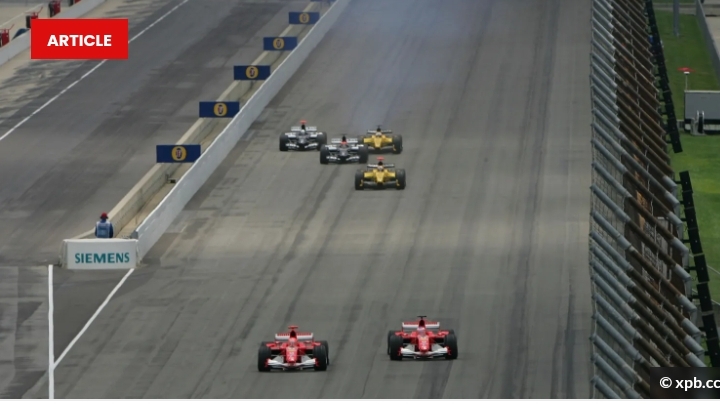The biggest F1 scandals: Qatar GP outshone by bizarre American tyre fiasco

As F1 returns to the United States, it is time to consider an incident that was significantly worse than the chaos at the Qatar Grand Prix two weeks ago.
The year is 2005. Lewis Hamilton drives in Formula 3, Max Verstappen goes to primary school and Fernando Alonso fights for his first world title. It is also the year in which the United States Grand Prix at Indianapolis ends in farce.
All the elements for a successful weekend are present, including lovely weather, about 100,000 spectators, and a full starting grid. The drivers are getting ready for a difficult battle on the oval and the winding infield circuit, where IndyCar and NASCAR are both present.
But when Friday’s free practice begins, the upbeat mood quickly fades. Ralf Schumacher, a Toyota driver, suffered a severe crash during the afternoon practice because of a problem with the left rear tire at Turn 13, the banked curve that completes the lap. The reserve driver Ricardo Zonta steps in for the German, who is no longer able to finish the race weekend.
At the same corner, there are a number of additional incidents that only affect runners wearing Michelin tires. Ferrari, Jordan, and Minardi have no problems with their Bridgestone tires, but the French tire manufacturer’s tires were unable to withstand the loads and demands of the track.
Over the weekend, Michelin decided to examine its tyres more closely and made a startling realization: the tyres’ quality is insufficient to last the full 73 laps. Michelin acknowledges, with its tail between its legs, that it can only ensure the safety of the drivers for ten laps.
*In 2005, changing tires during a race was prohibited.
Discussions
What follows is a race against time.
The seven teams with Michelin tyres are putting the lives of their drivers at risk if they send them onto the track on Sunday. One possible solution is to fly over new, safer tyres, but the FIA rejects this.
The idea of inserting a chicane at Turn 13 and thus reducing the speed in the bend is also nullified by the FIA. F1’s governing body gives the teams two choices: either let the drivers slow down in Turn 13 or make a pit stop every ten laps, in spite of that year’s regulation.
Little by little, the debacle turns into a major soap opera. Only Jordan and Minardi are willing to agree to any changes to the track. Ferrari team principal Jean Todt stands firm and refuses to agree to the proposal. The same goes for FIA president Max Mosley.
Later, all the team bosses come together, except for Todt. The F1 personalities discuss three alternative solutions:

°A race that does not count towards the championship;
°A race where all Michelin drivers take the chicane and the Bridgestone drivers don’t;
°A race in which the Michelin drivers cannot score points.
All three ideas then find their Waterloo and that the start of the race is approaching without a solution.
Embarrassment
The outcome? An embarrassing show is put on for thousands of American fans in the stands and for millions of TV viewers.
Only six drivers will start the race: Ferrari’s Michael Schumacher and Rubens Barrichello, Jordan’s Tiago Monteiro and Narain Karthikeyan, Minardi’s Christijan Albers and Patrick Friesacher, and all twenty drivers will begin their warm-up lap. At the conclusion of the formation lap, the remaining drivers sprint into the pit lane, park their vehicles, and withdraw from the competition.
Boos from the audience overpower the engine noise while it is starting. Monteiro finished on the podium for the first and only time in Formula One, and Christijan Albers secured points as Schumacher went on to win the only Ferrari race of the season.






